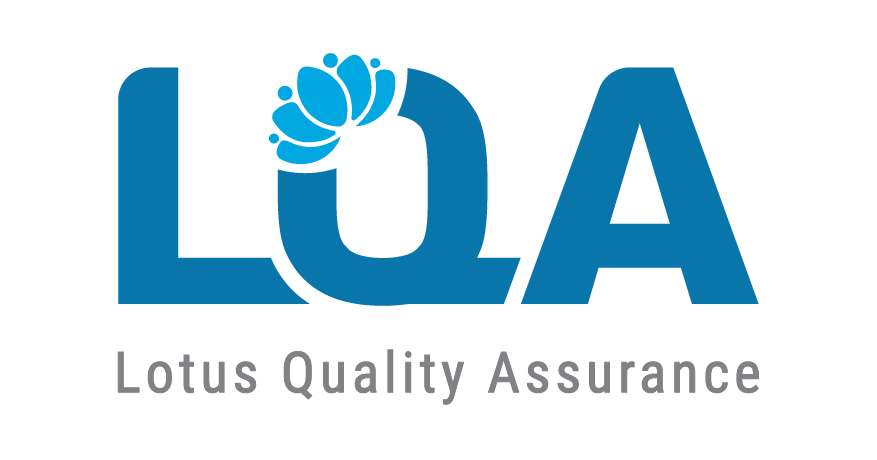IT Outsourcing Models: Choose the Right Approach
IT is among the top 4 outsourcing industries by Deloitte 2021 Global Survey. Business owners choose IT outsourcing services to handle new technologies and functions without spending a lot on training or hiring. Still, many IT outsourcing working models that meet different criteria may confuse you with choosing the most suitable outsourcing model for your business.
In this article, let’s dig deeper into the most common types of IT Outsourcing based on how you pay and involve with the process, their pros and cons, and what to consider to choose the right IT outsourcing working model for your company.
1. Quick Review On IT Outsourcing Models
Three IT Outsourcing Types
- Onshoring – Domestic vendors.
- Nearshoring – Neighboring vendors.
- Offshoring – Overseas vendors.
Four IT Outsourcing Pricing Models
- Project-based – Pay per project.
- Time and material – Pay per time and effort.
- Dedicated team – Pay monthly salary.
- Staff augmentation – Pay monthly salary.
Also read: What to do when choosing an IT outsourcing provider?
2. Types Of IT Outsourcing
The simplest way to categorize the IT Outsourcing models is to divide them by geological locations. Here are 3 major IT outsourcing types widely adopted by IT companies worldwide.
- Onshoring IT outsourcing: You will delegate your IT operations to an outsourced company located in your country. You won’t face language or timezone barriers but you won’t be able to utilize the advantage of geological pricing. Since a major feature why people want to outsource is to reduce cost, onshoring is not the most favorable IT outsourcing model.
- Nearshoring IT outsourcing: You will outsource your IT services to a partner in a neighboring country, such as a company in Singapore outsourcing their work in software development and software testing to a vendor in Vietnam. This is an ideal solution to achieve cost-effectiveness while maintaining communication in remote work.
- Offshoring IT outsourcing: You will hand over your IT services to an overseas software development company. This is the most popular IT outsourcing model as you have more chances to utilize high-skilled labor at lower prices. Still, it requires more effort to have effective communication with vendors with large timezone barriers.
Just with these simple definitions of IT outsourcing models, you can easily their pros and cons. Perhaps you have already found a suitable model for your business.
All in all, regarding communication, onshoring is seemingly the most effective, as both parties of vendors and clients share many features, including the language and the time. With onshoring, any feedback and reviews will receive equivalent feedback right away. In case of emergencies, the clients can contact the vendors via phone numbers, which are accessible anywhere, anytime.
However, in terms of cost-cutting, nearshoring and offshoring are favored more. Due to geological pricing, one can save up to 90% of the overall cost when working with nearshoring and offshoring vendors.
People often say that the price comes with quality, but in the case of nearshoring and offshoring, you can get the equivalent high-quality work at a much more reasonable price. Perhaps the only obstacle here is how to communicate effectively.
The reason why people prefer offshoring and nearshoring IT outsourcing models is that they prioritize cost-effectiveness more than anything. If your utmost priority is to reduce the cost to the lowest, you can consider an offshore development center in Vietnam.
3. The four IT outsourcing pricing models
With IT outsourcing pricing models, you will know the basics of how you can run your outsourcing projects and what models fit your financial situations and plan the most. You should look into these IT outsourcing pricing models before signing any contract with an international technology outsourcing company. By knowing how you are going to collaborate, you will have better plans for streamlining your visions and your goals.
Project-based IT outsourcing model
The project-based IT outsourcing model means delegating the entire process to a third-party IT firm. The projects have crystal-clear requirements of what the outputs are. Tailor-made for projects with fixed budgets, project-based outsourcing model is the most suitable when you already know what to expect from this project.
Project-based models work with an individual project, and these projects, quite often, are short-term. Operating in such a short time frame, project-based IT outsourcing model is suitable for businesses looking for vendors to work for new features of a project, or something that has a predefined goal.

IT Outsourcing models – Project-based
In regards to the financial matter, you will have to pay a fixed amount of money for what you want. Knowing how much you have to pay for the work, you can have better control of your budget and spending plan.
But what if you want something out of the original work scope? Project-based works if you are following the waterfall method but not the agile method.
To conclude, the project-based model is for clients who know exactly what they want and how they want it. To come up with this final information, business might have to go through multiple steps of business analysis and market research. With the firm information on what the market needs and predefined routes, project-based is the best IT outsourcing model.
Pros:
- Fixed-budget.
- Minimal engagement and management efforts required.
- Clients take minimal responsibility for failures and risks.
Cons:
- You will lack flexibility and be hard to change any aspects if the market changes.
- Your company and your IT team won’t get much experience in handling and managing these kinds of projects.
Suitable for:
- One-time projects and short-term projects.
- Small-size or mid-size projects.
- Predefined projects.
- Projects with stable market conditions and customers’ needs.
Time & Material IT outsourcing model
In Time & Material (or T&M), you pay for the hourly wage and material costs of your project. While project-based is a pay-upfront model, in Time and Material, you pay for what you get from the vendors. Time & Material contract is another popular IT Outsourcing model that is being applied in many companies and projects in the world.
The T&M is one of the most common models of IT outsourcing if you prefer an agile method. The business company can adjust the process on the way according to the market changes or customers’ reviews. Hence, this is the best IT outsourcing model if you are on a long-term project without precise requirements, a fixed timeline and some aspects may be subject to change.
Time & Material is the opposite of what a project-based outsourcing model can offer you. With T&M, you focus on the value and productivity of the whole process. Time & Material are deemed the viable solution for businesses that are working on complicated and not predefined requirements. However, there are periodic orders and frequent schedules.
Usually, Time & material contract model often goes with businesses working in rather new fields of the IT world. New markets and new experiences require changes by the minute, and only Time and Material can offer the flexibility that you need to thrive in a new sector.
Pros:
- Cost transparency and worthy.
- Lots of flexibility to handle changes and create user-approved products.
- Best for new technologies or changeable fields in the IT industry that are hard to predict.
Cons:
- Difficulty in tracking time and materials costs.
- Overboard the expected budget if initial estimates go wrong.
- Resource-consuming to work with your vendor.
Suitable for:
- Long-term projects.
- Agile, flexibility-preferred projects.
- Projects with unclear paths or requirements.
Dedicated Team IT outsourcing contract
A dedicated team has a similar way of operation as Time and Material, but the difference lies in how the recruitment goes. Normally, for project-based and T&M projects, the clients only clarify the outputs of the project. The matter of who does it and their skillsets is minor in their focus.
The team-based model is when you deeply care about who does the task and their skills. Your IT outsourcing partner will suggest a pool of engineers alongside their talents and you will choose specific specialists to form a team.

IT Outsourcing models – Dedicated Team
In terms of payment, the pricing system is quite transparent, the clients will pay monthly in accordance with the team size. The pay includes members’ salaries, service providers’ fees and any other additional fees that have been agreed upon before.
The scope of a dedicated team is quite big, and they will work on projects that are not strictly predefined, with requirements that can change over time. Since they are technically vendor’s employees, the vendors can give them multiple tasks of multiple projects. This feature can be further addressed in the contract between the vendors and the clients.
Pros:
- Your outsource team can work as your in-house IT team.
- Lots of flexibility during the development process to handle changes.
- You’re able to choose the best specialists for your projects.
- You’re in control of the project development process.
Cons:
- You need to understand the project’s field to choose the right engineers with the right skills.
- Resource-consuming to manage the outsourced team.
Suitable for:
- High-standard projects.
- Flexibility-preferred projects.
Staff Augmentation
Staff Augmentation is a dedicated team but in a smaller scope. Staff augmentation is basically hiring tech engineers from vendors and having them work as your full-time employees. Payments for staff augmentation are the same as in dedicated team IT outsourcing models, meaning that the staff should be paid monthly.
The highest risk of staff augmentation is that the employees working for you might not want to work for that project anymore, you might have to do the hiring process again, including the onboarding and training phase. The sustainability plan for staff augmentation is not very ideal. But for a short-term and mid-length project, staff augmentation is the perfect answer, even better if you are only looking for one or two employees.
Pros:
- Easy to scale up and down the team according to business changes.
- Cost-effective as you don’t need to hire a big team.
- Your IT team may learn some skills from outsourced engineers.
Cons:
- Resource-consuming to onboard and manage outsourced professionals.
- Conflicts and communication gaps may be created when merging outsourced professionals with your in-house team.
Suitable for:
- Short-team and mid-length projects.
- New or advanced skills and technologies.
4. How to choose the most suitable IT outsourcing models
Now you understand different types of IT outsourcing working models. The next step should be understanding your needs and circumstances, right?
There are a lot of factors to consider to find out the suitable IT outsourcing model that fits your business. Consider the following factors:
- The goal of your project, whether it is clear or still in the fog.
- The frequency of the project: Is this project one-time or repeatedly?
- The scope of your project. From the goals of the whole project, you can estimate how much labor will it cost you to complete the goal.
- Your preferred project management methodology. For example, if you want to follow the Agile or Scrum methodology, project-based is definitely not your ideal way to go.
- How do you expect the scalability from your outsourcing team?
- What technical skills and level of experience do you expect from your team members.
5. On the final note
Now you know all the IT outsourcing working models, their pros and cons, and your requirements. Simply go to any vendors and discuss your “order” to find the best team to work for you.
With an IT outsourcing model in your mind, you can determine how you can manage your team and how to allocate budgets during your project. The aforementioned models all have their pros and cons, and their use is just for some particular kinds of projects. One must know how they want the project to be carried out and the expected output (or at least what trajectory they are trying to pursue) of the outsourcing process to effectively work with vendors. If the requirements are not clear enough or the feelings of urgency make them rush into hasty decisions, they might fall into many outsourcing pitfalls instead of cutting costs and improving competencies.
About Lotus QA
At Lotus QA, we have a flexible approach for our clients to get the most suited IT Outsourcing model. As each of the models has its own traits and features, Lotus QA can customize them upon request, as long as it can help our clients successfully achieve their final goal. Flexible as it is, Lotus QA still complies with international processes and standards in how we provide you with our technology services.
Struggling with finding the best engagement model for you? Get free consultancy from our experts of Lotus QA. We will give you 24/7 support to find the perfect solution for you. Contact us:
- Website: https://www.lotus-qa.com/
- Tel: (+84) 24-6660-7474
- Fanpage: https://www.facebook.com/LotusQualityAssurance
















